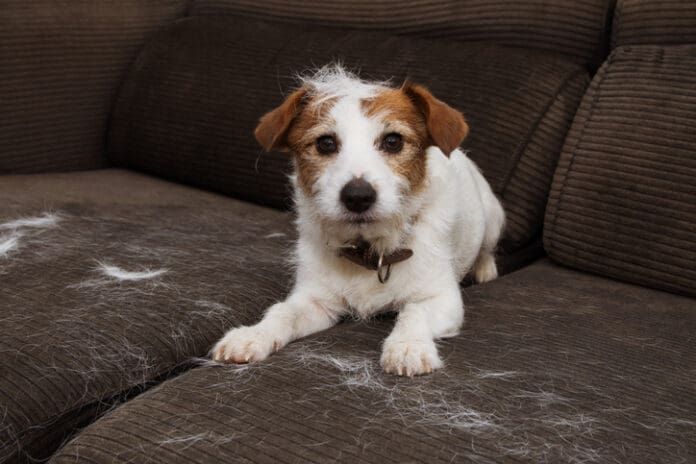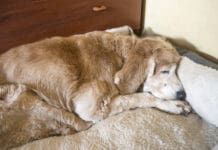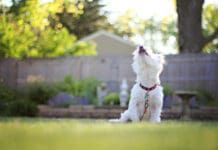Breeds and individuals within every breed shed and regrow hair at varying rates. Dogs who live indoors, with little exposure to natural light or cold temperatures, tend to shed in a more or less continuous fashion.
In contrast, dogs who live outside, exposed to natural light and cold temperatures, are more likely to shed for several weeks in the spring and fall. In the fall, their short, light coats shed as they grow a thick, warm undercoat and long, weather-resistant guard hairs to prepare them for winter. In the spring, the winter coat is shed to make way for new, shorter, and lighter coats. The hair coat changes in appearance and texture but the absolute numbers of hair follicles and hair do not. Contrary to popular belief, there is no such thing as a dog who does not shed; there are only dogs who shed a lot less. Each hair shaft produced by a hair follicle will eventually die and become dislodged from the skin (shed) and be replaced by a new hair shaft produced by that hair follicle. However, there are some breeds whose hair grows for a much longer period before it dies and is shed. There are several phases in the activiaty of a hair follicle. In the first, called the “anagen” or growing phase, the hair is produced by the follicle.
The “catagen” phase is a short interlude between the growth and the resting (“telogen”) phase. In the telogen phase, the hair follicle is basically dormant. The growth of the new hair pushes the old hair out of the skin. Even though spring and fall bring on prolific hair growth, the dog’s hair follicles are not all in the same phase at the same time, so thankfully he never becomes totally bald!
In humans, the hair follicles on our heads spend most of the time growing (anagen phase). This phase can last years, depending on the ultimate length of your hair (as determined by your genes). In contrast, the resting phase for each follicle is generally only weeks. Poodles have a predominantly anagen cycle like ours; their hair grows for so long, that it needs cutting (perhaps several times) before it falls out.
Most dogs, though, have a telogen (resting) predominant cycle. In these dogs the anagen phase is short, only long enough to achieve the genetically desired length of coat ̈C anywhere from one month to a year or more. The hair then cycles into the telogen phase and remains there for a prolonged period of time. This hair is tightly bound within the follicle and will not readily fall out or be pulled out. In the Nordic breeds, it is thought that the telogen phase may last for years.
Finally, any stress such as anesthesia, disease, pregnancy, or administration of certain drugs is likely to put most of the follicles into a resting phase. About two to three months after the stressful event, when the follicles start to be active again, abnormal shedding will often be observed.
To learn more about dog shedding, purchase Whole Dog Journal’s ebook Healthy Skin & Coat.






